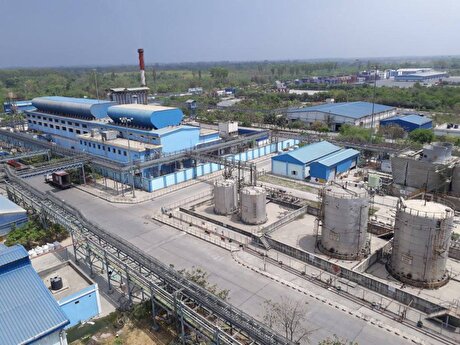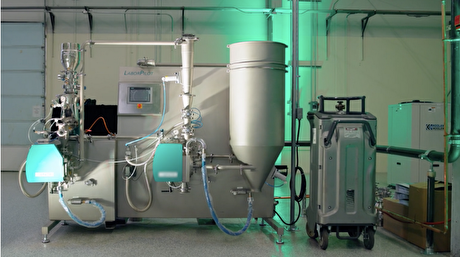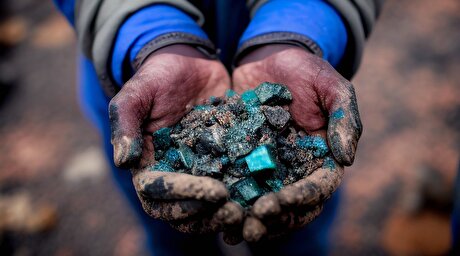
Samsung Launches S9 Presale in Iran

Galaxy S9 and S9+ were unveiled during a press conference on February 25 and on the sidelines of the Mobile World Congress 2018, the world’s biggest tech event that ran from Feb. 26 to March 1 in Barcelona.
According to a press release from Samsung’s representative in Iran, the handset will be offered by nine retailers and several online shops, including Iran’s largest online sales website Digikala.
Galaxy S9 and S9+ are respectively priced at about 39 and 44 million rials ($820 and $925) in Iran. The handsets are offered for $720 and $840 in the global market.
The latest Samsung smartphones are offered in three colors in Iran, namely Midnight Black, Titanium Gray and Lilac Purple. In the global market, the phones are also available in Coral Blue.
In addition to the handset, customers placing a preorder now will receive a gift package that includes a 128-GB memory card and a Samsung wireless charger. The packages will be on offer until March 10.
In addition to Samsung’s Iran website or local online retailer Digikala, the latest handsets can be preordered at the following stores: Pars Microtel, Samsung’s shops at Palladium Shopping Center, Megamall and Paytakht Electronics Shopping Center.
Samsung is yet to announce a delivery date for the preordered handsets, but the mobile phones are expected to be in customers’ hands before Norouz, the Iranian New Year holidays that coincide with March 21-April 2.
The release of Samsung Note 9 is expected in August. Market observers believe the model might suit many users’ needs better and opting for a wait and see strategy may pay off.
Registry Scheme
The new Samsung flagships have been included in the government’s Registry Scheme designed to curb mobile phone smuggling. As per the scheme, local mobile operators are barred from offering services to contraband gadgets.
Earlier, many preferred to purchase the handsets brought into Iran by smugglers since they were priced relatively lower than those entering the country through legal channels. Mobile phone import tariffs stand at 18% in Iran.
Since the Registry Scheme have already been applied to Samsung S9 and S9+, the smuggled smartphones would not be usable in Iran.
Other Samsung models have been exempted from the mandatory Mobile Registry Scheme until the end of the Norouz holidays.
Samsung is the dominant brand in Iran and estimated to have a 50% share in the market. However, since Iran’s market is flooded with smuggled handsets, no accurate data are available.
According to a recent report from Iran’s largest Android app market, Café Bazaar, about 51% of its 35 million users have handsets produced by the South Korean tech giant, which translates into 17.8 million users. Samsung’s Galaxy J5 has the biggest share.
Cafe Bazaar reports that Samsung’s low-end smartphones Galaxy J series, which are made with low-cost hardware and have an average performance, hold the biggest share (22%).
The most popular models in the series are J5 (9%), J7 (7%), J1 (4%) and J3 (2%). Two models of its upper mid-range Android smartphones, namely Galaxy A3 and A7, are also among the popular Android phones, each with a 2% share.
S9 Specifications
The Galaxy S9 and S9+ share their looks with their older brothers S8 and S8+ but the new models boast a number of upgrades, including an enhanced camera and better fingerprint scanner placement.
Samsung’s S8 series was often criticized by users for misplacement of its fingerprint scanner (located on the right side of the camera). In the S9 series, the scanner has been moved below the camera, which provides easier access and reduces the chance of smudging the camera lens.
Similar to the previous series, Super AMOLED panels with 2960 x 1440 pixel resolutions (the same as the Note 8) are used in the Galaxy S9 and S9+.
And just like most flagship smartphones, the S9 series has an edge-to-edge display and is water resistant.
The S9 and S9+ cameras can use software to sense the level of light and automatically switch aperture. If there is enough light, the camera will switch to the f/2.4 aperture and capture more of the background in photos. In darker conditions, the camera will remain at a bright f/1.5.
The S9+ features an additional wide-angle camera, for dual rear-facing cameras, while the S9 has a single 12-megapixel rear camera.
The S9 and S9 Plus have retained their headphone jacks, unlike other phones in the class, including the iPhone X, 8 and 8 Plus, Pixel 2 XL, or the Huawei Mate 10 Pro.
Just like every handset that can be charged without wire, the S9 series has a glass back that can easily collect fingerprints and look dirty. However, the company says the front and the back of the handsets are “oil-prone”, an aspect which is yet to be tested.


Hindustan Zinc to invest $438 million to build reprocessing plant

Gold price edges up as market awaits Fed minutes, Powell speech

Glencore trader who led ill-fated battery recycling push to exit

UBS lifts 2026 gold forecasts on US macro risks

Roshel, Swebor partner to produce ballistic-grade steel in Canada

Iron ore price dips on China blast furnace cuts, US trade restrictions

EverMetal launches US-based critical metals recycling platform

South Africa mining lobby gives draft law feedback with concerns

US hikes steel, aluminum tariffs on imported wind turbines, cranes, railcars

Barrick’s Reko Diq in line for $410M ADB backing

Gold price gains 1% as Powell gives dovish signal

Electra converts debt, launches $30M raise to jumpstart stalled cobalt refinery

Gold boom drives rising costs for Aussie producers

Vulcan Elements enters US rare earth magnet manufacturing race

Trump raises stakes over Resolution Copper project with BHP, Rio Tinto CEOs at White House

US seeks to stockpile cobalt for first time in decades

Trump weighs using $2 billion in CHIPS Act funding for critical minerals

Nevada army depot to serve as base for first US strategic minerals stockpile

Emirates Global Aluminium unit to exit Guinea after mine seized

Barrick’s Reko Diq in line for $410M ADB backing

Gold price gains 1% as Powell gives dovish signal

Electra converts debt, launches $30M raise to jumpstart stalled cobalt refinery

Gold boom drives rising costs for Aussie producers

Vulcan Elements enters US rare earth magnet manufacturing race

US seeks to stockpile cobalt for first time in decades

Trump weighs using $2 billion in CHIPS Act funding for critical minerals

Nevada army depot to serve as base for first US strategic minerals stockpile

Tailings could meet much of US critical mineral demand – study














